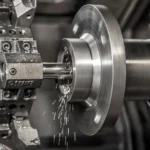As compared to input materials like films, digital versions of a picture can be shot, edited, preserved, and stored by the director. In comparison to traditional film cameras, the use of digital cameras and many other technologies speeds up the production of movies.
The largest impact of video technology may be seen in the new cameras that enable filmmakers to shoot in greater quality, allowing viewers to see more of the incredible set design work. Films that were previously impossible to make are now accomplished by video technology, which now controls whole chunks of the film.
The quality of the lenses and pictures has greatly improved. The real world and the one on the screen are becoming combined through techniques like 3D and CGI Technology has aided in the evolution of the film business. The learning of new concepts has left an impression.
1. Drones that operate independently
The development of autonomous drone cameras is thanks to the domains of automation and artificial intelligence. These drones can swiftly capture frames while properly avoiding flying obstacles. The aircraft are not entirely autonomous as of yet.
Even though there are now repercussions, once completely automated, these drones will have a significant impact on the film business.
2. A video editing program
The art of film editing is being revolutionized by computerized video technology. The current filmmaking method heavily relies on computational video editing, which produces amazing outcomes.
The algorithmic method was used to edit a fast-moving automobile pursuit in the rain in We Own The Night. The cloud’s visual effects were created throughout post-production. The future of film editing
3. virtual reality.
Video production London is also finding ways to be affected by virtual reality. In order to make use of VR technology, the production crew has started using 4K 3D cameras. We can imagine enjoying a 4K immersive 3D movie sooner rather than later.
Like other artistic art forms, filmmaking is known for being orderly chaos. Failure to follow the optimal method can lead to the failure of projects of any kind or price.
Stages of filmmaking:
4. thought and project initiation
The very first idea behind a movie is what it might be. the first struggle or situation in a novel, as well as the lead character you will explore.
High-concept ideas are preferred in filmmaking. It is simpler to recruit people for the project if the movie can be immediately and easily described.
5. costing.
You create a budget so you can properly spend money on your movie. Set a reasonable budgetary cap earlier on and keep tabs on expenses all through the filmmaking process.
Consider the resources needed and the areas where expenses are required. How much money will you be required to expend on new investments or rental properties? What is the anticipated cost of hiring personnel, purchasing costumes and props, etc.?
6. creation of ideas
The process of developing a movie idea can be repeated. The value of your presentation should improve as you go through the process of making the movie.
In order to have something that can be written and filmed, the idea first needs to have story specifics added to it. Coming up with ideas, whether done alone or with others, aids in discovering new innovative practices.
7. writing a screenplay and script.
The majority of the dialogue and the numerous characters’ speech patterns make up storytelling. Although descriptions of the setting or circumstances help to create the atmosphere, you really want a script that uses the characters’ words to convey the story. the production company is creative. Video production in London develops the creative concept of a screenplay or script.
8. finding the location.
Exploration is the process of looking for appropriate sites for a movie shoot. Researchers look for interior and exterior locations that most closely match those in the screenplay.
9. storyboard.
Storyboards serve as the equivalent of a camera’s narrative. They use pictures rather than words to depict important scenes photographs and camera positions.
They divide dramatic action into a series of panels with numbers for production purposes, rather like a graphic novel.
10. making film.
The main action in this process is shooting or filming. All that matters is getting the raw footage, all the shots, and all the audio that the script calls for. Your technology will be the biggest issue, assuming that all the other components are in place.
Of course, a decent, reasonably priced camera is essential, as are microphones and any necessary lighting.
11. editing.
Editing, which requires patience and a lot of talent, is essential to delivering the story as it is described in the narrative and illustrated in the design.
Each scene’s finest shot or “take” is then put in the proper order. The objective is to keep the audience engaged and entertained while also maximizing duration.
Conclusion.
Observing how technology is affecting the filmmaking profession is amazing. The customer experience is being controlled by technology, from the filming of the movie to its display on the screen.
Without a doubt, technology will continue to change how movies are made and how audiences watch them.
The utilization of cutting-edge visual effects methods, cutting-edge technology, filmmaking software, and other tools will enable filmmakers to provide an immersive experience.
Read More: What was the intention of the first video productions




